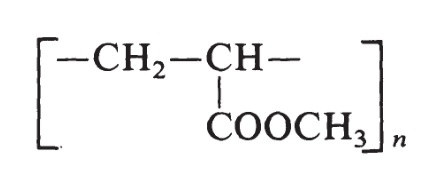2-프로페노익 산 메틸에스테르 호모폴리머
|
|
2-프로페노익 산 메틸에스테르 호모폴리머 속성
- 끓는 점
- 110 °C
- 밀도
- 1.22 g/mL at 25 °C
- 증기 밀도
- >1 (vs air)
- 굴절률
- n
20/D 1.494
- 인화점
- 40 °F
- 저장 조건
- Flammables area
- 물리적 상태
- 액체
- 색상
- 투명한
안전
- 위험 및 안전 성명
- 위험 및 사전주의 사항 (GHS)
| 위험품 표기 | F,Xn | ||
|---|---|---|---|
| 위험 카페고리 넘버 | 11-38-48/20-63-65-67 | ||
| 안전지침서 | 36/37-46-62-16 | ||
| 유엔번호(UN No.) | UN 1294 3/PG 2 | ||
| WGK 독일 | 2 | ||
| 자연 발화 온도 | ~896 °F | ||
| HS 번호 | 32082010 | ||
| 기존화학 물질 | KE-29593 |
| 그림문자(GHS): |
  
|
||||||||||||||||||||||||||||||||||||||||||
|---|---|---|---|---|---|---|---|---|---|---|---|---|---|---|---|---|---|---|---|---|---|---|---|---|---|---|---|---|---|---|---|---|---|---|---|---|---|---|---|---|---|---|---|
| 신호 어: | Danger | ||||||||||||||||||||||||||||||||||||||||||
| 유해·위험 문구: |
|
||||||||||||||||||||||||||||||||||||||||||
| 예방조치문구: |
|
2-프로페노익 산 메틸에스테르 호모폴리머 C화학적 특성, 용도, 생산
화학적 성질
clear liquid용도
PMA/methylamine borane (MeAB) composites, prepared by solution blending process finds uses as a hydrogen storage material with better dehydrogenation property compared to MeAB.제조 방법
The structure of methyl acrylate is H2C=CH-COOCH3. The monomer used to prepare poly(methyl acrylate) is produced by the oxidation of propylene. The resin is made by free-radical polymerization initiated by peroxide catalysts and has the following formula:
Poly(methyl acrylate) resins vary from soft, elastic, film-forming materials to hard plastics.
생산 방법
Prepared by the polymerization of acrylic and methacrylic acids or their esters, e.g. butyl ester or dimethylaminoethyl ester정의
ChEBI: An acrylate macromolecule composed of repeating methoxycarbonylethylene units.Safety
Polymethacrylate copolymers are widely used as film-coating materials in oral pharmaceutical formulations. They are also used in topical formulations and are generally regarded as nontoxic and nonirritant materials.Based on relevant chronic oral toxicity studies in rats and conventionally calculated with a safety factor of 100, a daily intake of 2–200 mg/kg body-weight depending on the grade of Eudragit may be regarded as essentially safe in humans.
저장
Dry powder polymer forms are stable at temperatures less than 30°C. Above this temperature, powders tend to form clumps, although this does not affect the quality of the substance and the clumps can be readily broken up. Dry powders are stable for at least 3 years if stored in a tightly closed container at less than 30°C.Dispersions are sensitive to extreme temperatures and phase separation occurs below 0°C. Dispersions should therefore be stored at temperatures between 5 and 25°C and are stable for at least 18 months after shipping from the manufacturer’s warehouse if stored in a tightly closed container at the above conditions.
Purification Methods
Precipitate it from a 2% solution in acetone by addition of water.비 호환성
Incompatibilities occur with certain polymethacrylate dispersions depending upon the ionic and physical properties of the polymer and solvent. For example, coagulation may be caused by soluble electrolytes, pH changes, some organic solvents, and extremes of temperature. For example, dispersions of Eudragit L 30 D, RL 30 D, L 100-55, and RS 30 D are incompatible with magnesium stearate. Eastacryl 30 D, Kollicoat MAE 100 P, and Kollicoat MAE 30 DP are also incompatible with magnesium stearate.Interactions between polymethacrylates and some drugs can occur, although solid polymethacrylates and organic solutions are generally more compatible than aqueous dispersions.
Regulatory Status
Included in the FDA Inactive Ingredients Database (oral capsules and tablets). Included in nonparenteral medicines licensed in the UK. Included in the Canadian List of Acceptable Non-medicinal Ingredients.2-프로페노익 산 메틸에스테르 호모폴리머 준비 용품 및 원자재
원자재
준비 용품
2-프로페노익 산 메틸에스테르 호모폴리머 공급 업체
글로벌( 59)공급 업체
| 공급자 | 전화 | 이메일 | 국가 | 제품 수 | 이점 |
|---|---|---|---|---|---|
| Hebei Mojin Biotechnology Co., Ltd | +8613288715578 |
sales@hbmojin.com | China | 12456 | 58 |
| Hubei xin bonus chemical co. LTD | 86-13657291602 |
linda@hubeijusheng.com | CHINA | 22968 | 58 |
| Chongqing Chemdad Co., Ltd | +86-023-61398051 +8613650506873 |
sales@chemdad.com | China | 39916 | 58 |
| Shaanxi Dideu Medichem Co. Ltd | +86-029-81138252 +86-18789408387 |
1057@dideu.com | China | 3537 | 58 |
| Hebei Yanxi Chemical Co., Ltd. | +8617531190177 |
peter@yan-xi.com | China | 5993 | 58 |
| Career Henan Chemica Co | +86-0371-86658258 15093356674; |
laboratory@coreychem.com | China | 30255 | 58 |
| Dideu Industries Group Limited | +86-29-89586680 +86-15129568250 |
1026@dideu.com | China | 29220 | 58 |
| Alfa Chemistry | +1-5166625404 |
Info@alfa-chemistry.com | United States | 21317 | 58 |
| Hebei Guanlang Biotechnology Co., Ltd. | +86-19930503259 +86-19930503259 |
cherry@crovellbio.com | China | 18456 | 58 |
| Aladdin Scientific | +1-833-552-7181 |
sales@aladdinsci.com | United States | 52927 | 58 |
2-프로페노익 산 메틸에스테르 호모폴리머 관련 검색:
코발트(II) 아세틸아세토네이트 하이드레이트 아세틸아세톤산 구리 아세틸아세토산 제2철 디스프로슘 트리(2,2,6,6-테트라메틸-3,5-헵탄디오네이트) 알루미늄 아세틸아세토네이트 실버 아세틸아세토네이트 메틸메타크릴레이트 메타크릴산 메틸-에틸 아크릴산 중합체 아크릴산메틸
Tris(2,4-pentanedionato)chroMiuM(III)
TERT-BUTYL ISOCYANIDE
METHYL ISOCYANOACETATE
Benzyl isocyanide
SALCOMINE
DICHLORO(ETHYLENEDIAMINE)PLATINUM(II)
PHENYLSELENOL
Ethyl isocyanoacetate
TRIS(2,2,6,6-TETRAMETHYL-3,5-HEPTANEDIONATO)EUROPIUM(III)






